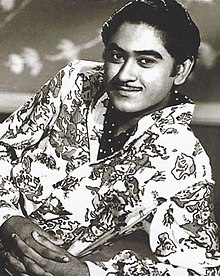
Back Jodeln ALS يودلية Arabic Ёдль Byelorussian Йодлер пеене Bulgarian Iòdel Catalan Jódlování Czech Jodling Danish Jodeln German Λαρυγγισμός Greek Jodlado Esperanto


Yodeling (also jodeling) is a form of singing which involves repeated and rapid changes of pitch between the low-pitch chest register (or "chest voice") and the high-pitch head register or falsetto. The English word yodel is derived from the German word jodeln, meaning "to utter the syllable jo" (pronounced "yo"). This vocal technique is used in many cultures worldwide.[1] Recent scientific research concerning yodeling and non-Western cultures suggests that music and speech may have evolved from a common prosodic precursor.[2][3]
Alpine yodeling was a longtime rural tradition in Europe, and became popular in the 1830s as entertainment in theaters and music halls.[4] In Europe, yodeling is still a major feature of folk music (Volksmusik) from Switzerland, Austria, and southern Germany and can be heard in many contemporary folk songs, which are also featured on regular TV broadcasts.
In the United States, traveling minstrels were yodeling in the 19th century, and, in 1920, the Victor recording company listed 17 yodels in their catalogue. In 1928, blending Alpine yodeling with African American work and blues music styles and traditional folk music, Jimmie Rodgers released his recording "Blue Yodel No. 1". Rodgers' "blue yodel", a term sometimes used to differentiate the earlier Austrian yodeling from the American form of yodeling introduced by Rodgers, created an instant national craze for yodeling in the United States; according to a black musician[who?] who lived near Rodgers in Mississippi, both black and white musicians began to copy Rodgers' style of vocal delivery.[citation needed]
When sound films first became available in the 1930s the industry began to turn out numerous films to meet the nation's fascination with the American cowboy. The singing cowboy was a subtype of the archetypal cowboy hero of early Western films, popularized by many of the B-movies of the 1930s and 1940s.[5] The transformation of Rodgers' blue yodel to the cowboy yodel involved both a change in rhythm and a move away from Southern blues-type lyrics. Some yodels contained more of the Alpine type of yodel as well. Most famous of the singing cowboy film stars were Gene Autry and Roy Rogers, both accomplished yodelers. The popularity of yodeling lasted through the 1940s, but by the 1950s it became rare to hear yodeling in country and western music.[6]
- ^ "Perfect Sound Forever – Online Music Magazine". furious.com. Archived from the original on March 4, 2016.
- ^ Gertraud Fenk-Oczlon et al. (2017), "What Vowels Can Tell Us about the Evolution of Music", PMID: 29018371, doi:10.3389/fpsyg.2017.01581 (pdf)
- ^ Hoch, Matthew; ed. (2019). So You Want to Sing World Music: A Guide for Performers, p.16 Rowman & Littlefield Publishers. ISBN 9781538112281. "Derived from the Middle and High German verb jôlen, "meaning 'to call', yodeling is thought to have originated as a call between mountain peoples. Whether there was a practical use for yodeling is unclear, but its popularity as a folk music endures."'
- ^ Tosches, Nick (5 August 2009). Country: The Twisted Roots Of Rock 'n' Roll. Da Capo Press. ISBN 9780786750986 – via Google Books.
- ^ Logsdon, Guy (1995). The Whorehouse Bells were Ringing: And other songs cowboys sing. University of Illinois Press. S. 316. ISBN 9780252064883 – via Google Books.
- ^ Tosches, Nick (1996). Country: The twisted roots of rock 'n' roll. Da Capo Press. p. 110. ISBN 978-0-306-80713-8.